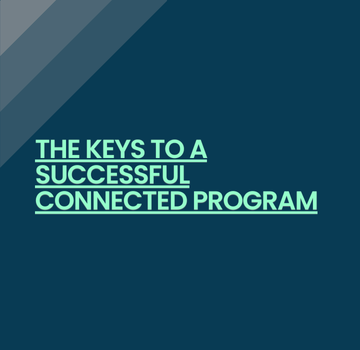|
Talking Telematics is a series of interviews between Philippe Moulin, CEO of DriveQuant, and insurance insiders. The topics are exclusively related to telematics and the benefits of the technology for the motor insurance industry. The following interview is based on a podcast hosted by Florian Graillot, VC at Astorya.io. The transcription has been edited for readability. |
Florian: Hello Philippe, I am very happy to follow up on our previous conversation that was focused on the evolution of telematics in the last decade. Today, I want to focus more on the added value this technology brings to car insurers. Can you tell us more about your telematics platform? How does it work?
Our driving data processing platform is the first element we worked on. It’s a device-agnostic platform that processes driving data whatever the source. We still have customers who just use our API to process driving data coming from their own telematics devices. Our expertise, what makes us different, is the data processing algorithms we have designed. They are safeguarded by intellectual property laws.
Very quickly, we realised that the smartphone was the best tool for collecting driving data, for three reasons:
-
Smartphone’s operating systems are powerful, and the devices are equipped with high-quality sensors that collect rich data.
-
The advantage of smartphones over traditional telematics devices is that it’s an evolving solution. It’s easy to deploy on a large scale because there is one smartphone in every vehicle in the world today. Also, you can add new features simply by updating the app.
-
Finally, it's a device that’s ubiquitous. It contributes to creating new interactions between the policyholders and the insurers. It’s important in particular for road safety purposes.
So taking all of that into account, we have developed a comprehensive set of tools for collecting driving data from smartphones. For car insurers that don’t have a mobile app, we have created a white label application. It allows them to quickly launch a connected insurance product without investing in the development of a mobile app.
For insurers that already have a mobile app, or that want to quickly deploy the program on a large scale, they can integrate DriveKit, our telematics SDK, into their app. Our SDK gives them access to all of our connected services (driving scores, crash detection, driving challenges, coaching, connected assistance…).
Florian: It’s interesting to provide two different solutions to collect driving data. This naturally leads us to the question of added value. Technology being obviously only a means. To illustrate this, can you tell us a little about your clients? Who are they? Insurers, OEMs, startups?
As of today, we currently have thirty active clients that use our Software-as-a-Service (SaaS) solution. It's a generic solution that is used by all our customers. Of course, we provide many customisation options, in particular with the DriveKit SDK.
We do have some clients in the fleet management industry that want to benefit from specific telematics features. But our main clients are insurance players.
In France, we work with many types of actors ranging from newly launched start-ups to traditional insurers including Covéa and MAIF.
With Covéa, we have launched a road safety program called DrivMeUp for MAAF and GMF policyholders. It aims to prevent distracted driving.
With MAIF, we have developed a complete usage-based insurance program for its subsidiary Altima Assurances. We started by launching a pay-per-minute insurance product. The partnership was later extended to launch a pay-per-kilometre insurance product.
APRIL is also a customer. We have partnered to launch a behavior-based insurance, a Pay-How-You-Drive product for young drivers.
We work with a small insurance broker called YEET. This partner offers Pay-How-You-Drive insurance to ride-hailing drivers.
One of our main partners is Roole. It’s a car club that provides services around vehicle usage and notably services related to insurance: deductible buyback, 0-kilometre assistance and warranty extension. They use driving data for prevention, to engage their community of drivers, and to better understand their users' needs for marketing purposes.
Beyond France, we have a large international footprint.
In Italy, we have a partnership with Quixa. It focuses on crash detection and eco-driving.
In Denmark, we have launched a road safety program with LB Forsikring, one of the biggest insurers there. The policyholders who voluntarily enroll in the program can lower their deductible based on how well they drive. LB Forsikring doesn’t link the driving behavior to the premium. Instead, it links the driving behavior to the deductible. It’s an interesting new approach.
In Africa, we work with a Tunisian insurer and we’re about to launch a significant project in South Africa with one of the biggest insurers in the market.
Overall, we cover all types of connected insurance products. Most of the time, there is a strong focus on prevention. And increasingly, we have projects that include pricing and connected assistance components.
Florian: Thank you for these details, it gives a good overview of your client portfolio. It's interesting to see different use cases as well. And the term connected insurance really makes sense when listening to you! Beyond the insurers you just mentioned, I believe you also work with a leading reinsurer. Can you tell us more about this partnership?
Yes, we are SCOR’s strategic partner for connected insurance products. Our partnership aims to support small or medium-sized insurers worldwide who want to launch a connected insurance program. These insurers need support from a financial and technological point of view. Together with SCOR, we provide them with a turnkey solution.
Florian: Let’s go back to the question of added value. Can you tell us more on the impact of your solutions on the insurance value chain?
Traditionally, when people talk about connected insurance, the first thought that comes to mind is modular pricing. Matching rate to risk is of course an important component of connected insurance. Insurers launch pay-per-kilometre a pay-per-minute programs because the more you drive, the higher the risk. So, it makes sense to offer specific insurance products for people who don’t use their car much.
It also makes sense to launch Pay-How-You-Drive programs to reduce churn and retain the good drivers. However, connected insurance shouldn't be limited to behavior-based insurance. It’s much, much broader than that.
As I said earlier, the prevention aspect is becoming more and more important. Once you start collecting policyholders’s driving data, it's important to share the value. It’s an exchange. Insurers have to offer value to their customers in exchange for their driving data. Otherwise, it will be perceived as a negative scheme where the insured feels that the insurer wants to track them. Sharing value contributes to reducing the policyholder’s road risk, which is a real added value.
In mature telematics markets, connected services such as crash detection are gaining popularity. Driving data is leveraged to provide assistance in the event of a severe collision by automatically alerting the assistance teams who can then dispatch emergency services. For less severe collisions, driving data contributes to accelerate and improve claims management enhancing customer satisfaction and loyalty.
It’s obvious that all the verticals of insurance are impacted by driving data. And from our own experience, we can say that the programs with the most convincing results are those where the insurer has truly adopted these technologies, and uses data in all its business areas. As a Service Telematics Provider (TSP), we are at the heart of the digitisation of insurance as driving data involves marketing, prevention, pricing, assistance, and claims management.
Florian: Regarding the results you mentioned, do you have any figures to share with us? And more broadly: what objectives do your clients have in mind when they decide to work with DriveQuant?
There are many metrics available to measure the positive impact of a connected project. It depends on the project’s purpose.
For road safety programs, we closely monitor the reduction of the frequency of critical indicators such as hard braking or phone distraction. Generally, prevention programs generate a 30% reduction in phone distraction, when the program is well-executed and the policyholders are engaged in the program.
The impact is quite significant in terms of road safety. To keep users motivated and engaged in the program, driving challenges are a powerful tool that many of our clients leverage.
Some of them have conducted studies to collect users feedback on the road safety programs. There isn’t one study where users are dissatisfied. Prevention programs are a real opportunity for insurers to create new interactions with their policyholders.
Another metric to follow is the ratings of the apps on the app stores. Generally, our apps get more than 4 stars, which is very good for insurance apps.
And of course, we monitor pure insurance metrics such as the combined ratio. Recently, a client told me that its combined ratio is below 50%. That’s impressive! Of course, there are other factors than technology contributing to such a performance. However, it’s no coincidence that all well-executed connected insurance products have a very satisfactory combined ratio!
Florian: What you say relates to a famous insurance joke: "80% of drivers think they drive better than average." Beyond the joke, it illustrates a barrier that is often mentioned when thinking about telematics or connected insurance. It's the gap between, on one hand, the perception of the customer who believes he drives better than he really does, and therefore expects a lower insurance premium, and on the other hand, there is what the data says, which is not always as good as expected. Is it a thing? Is there a real tension here between policyholders and their insurer? Maybe you have some best practices to share with us specifically to combat this perception bias?
These stakes are really ingrained in the product we develop. What we do is provide a data collection technology to insurers. What really matters at the end of the day is how the data is being shared. My mantra is: data must bring transparency.
We encourage all our clients to share data with their customers and to build programs that are fully transparent. These conditions are required to engage policyholders in the program and improve their driving behavior.
To get back to the joke, I can give an example of a car manufacturer who conducted a survey on the users of its brand app. It found that there was an inverse correlation: the more drivers think their driving is good, the lower their score! It was the opposite of what it should have been. It’s interesting, isn’t it?
Often when launching a prevention program, it’s expected that only good drivers will enroll in the program. Yet, driving challenges are specifically designed for improving the driving behavior of the not-so-good drivers. At the end of the day, as an insurer, you want bad drivers to become better drivers in order to reduce the crash rate of your portfolio and lower your costs.
Regarding the program we launched with LB Forsikring in Denmark, we found that bad drivers, or at least drivers that had already paid a deductible, were more engaged in the program than other drivers. It’s these drivers who have already paid a deductible who are more interested in paying less the next time they have to do it.
For every project we have launched, we have learned something new. What's interesting, I think, is the transparency, the information sharing. In telematics, our job is to measure. Because you can't improve what you don't measure! So, the first step is to measure. And then, it's about finding the right incentives and the right tools to motivate and engage drivers in order to eventually reduce their road risk.
Florian: Thank you very much, Philippe, for another great conversation. It's great to be able to understand concretely the impact of telematics on road safety and what connected insurance products bring to car insurers.



![[2025 Edition] The Guide to Connected Insurance](https://blog.drivequant.com/hubfs/7-%20%5BEdition%202025%5D%20Le%20Guide%20de%20lAssurance%20Connect%C3%A9e.png)
